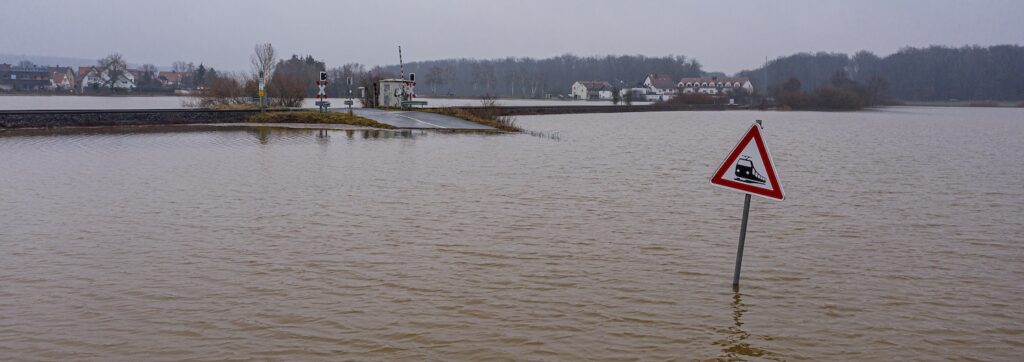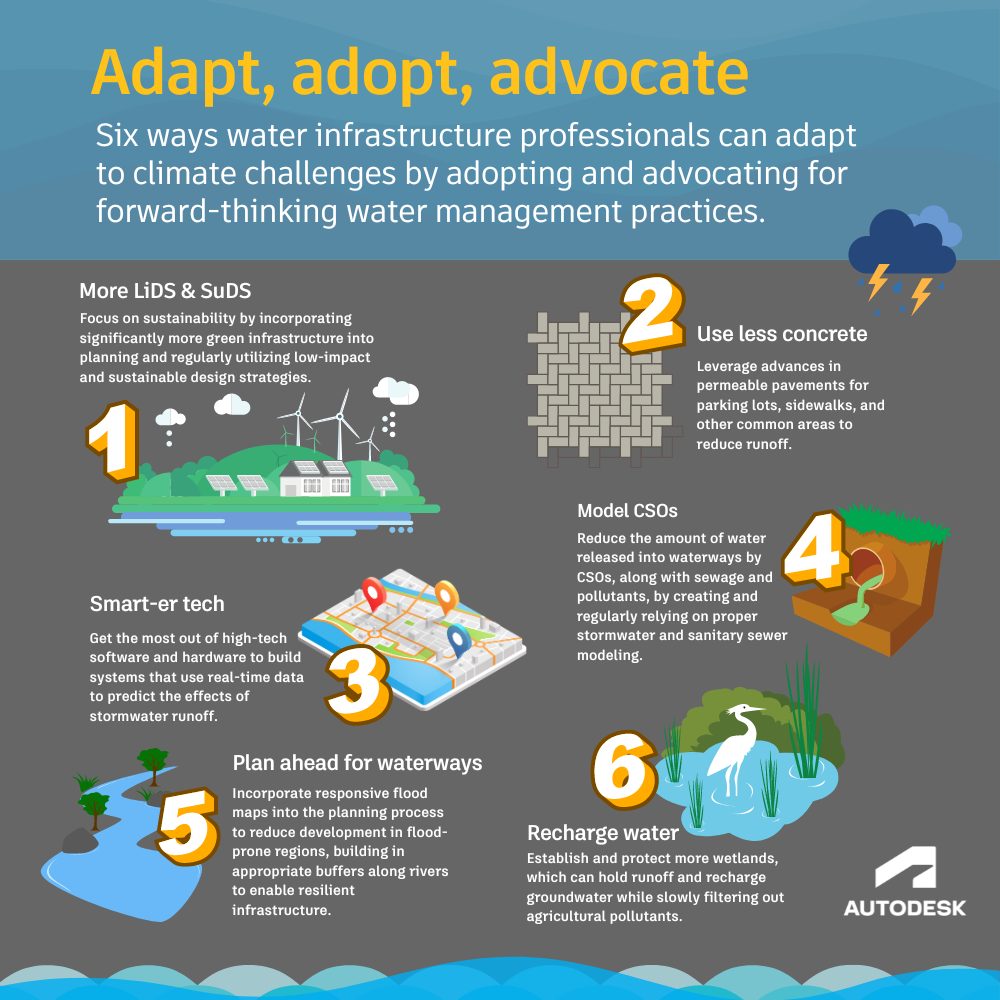& Construction

Integrated BIM tools, including Revit, AutoCAD, and Civil 3D
& Manufacturing

Professional CAD/CAM tools built on Inventor and AutoCAD
5 min read
As the world’s climate continues to shift, the effects of extreme weather events are beginning to cascade through the modern civilized world. While topical discussions of the impacts of climate change often focus on significant natural disasters, there are other more gradual impacts to the way the world works that this shifting climate brings.

As larger storms become more common and their intensities swing more drastically, the work that hydraulic modelers must undertake to adequately support their network increases. In some ways, as water professionals we are straying into uncharted waters.
Looking at this from a data-driven perspective, according to the U.S EPA, since 1901 global precipitation has increased .04 inches, roughly 1 mm each year, with certain regions experiencing even more. To the untrained eye, this may seem too miniscule to care about, but spread this out over an entire watershed over the lifetime of our stormwater controls, and any experienced hydraulic modeler knows that there could be disaster brewing with swings in our extreme weather event models.
So what are the trends that the industry should pay attention to in the realm of stormwater modeling as a result of climate change? Luckily, there are researchers much smarter than myself who have published a number of scientific studies examining this exact question.
During a research study, The Practical Influence of Climate Change on the Performance of Road Stormwater Drainage Infrastructure, which digs into various methods taken to examine extreme weather events, researchers from Universiti Kebangsaan Malaysia concluded that “new approaches need to be developed based on soft computing models, given they will offer practical guidance in evaluating the impacts of climate change going forward, particularly regarding road drainage systems (ie, adaptive responses to preserve road drainage sustainability).” Underscoring this note further, the team calls back to how drainage systems are typically designed: based on given rainfall cycles or patterns, which are rapidly shifting in changing climates.
The paper implores road and drainage authorities to “provide sufficient funds for road drainage maintenance, infrastructure enhancement work, bridges, and culvert maintenance work. These should also be targeted towards employing drainage inspectors to monitor, track, and report on maintenance work.” While proper drainage system maintenance and monitoring is vital today, the team notes that its importance will only increase as these systems need to cope with more extreme wet weather events.

So, climate change will bring an increased focus on stormwater and drainage system maintenance, monitoring, and upkeep, imploring utilities to properly fund these programs and maintain a forward-thinking approach. But what about actual data? Let’s come down from the high level and examine another study.
Researchers from the University of West Virginia studied the impact of climate change on coastal areas in their paper Climate and land cover change impacts on stormwater runoff in large-scale coastal-urban environments, particularly narrowing in on regions in Florida. The team concluded that, “On the basin-scale average, the projected climatic changes would lead to high increases (47-87%) in annual storm runoff by the middle through the end of the 21st century.” They go on to note that these increases would be significant not just in dense urban areas like Miami, but as the imperviousness of the Northern, Western, and Southern Florida basins increases, shifting from farm and pasture land to more dense use, that their runoff would see stark increases as well.
The paper concludes by imploring network operators, “Major upgradations of existing stormwater drainage infrastructure should be pursued to convey the projected high increases in runoff.” These increases in runoff, particularly in already flood-prone regions, ring significant alarm bells for drainage network operators. When approaching modern drainage systems, lackadaisically designing for current extreme weather conditions will no longer work. Rather, stormwater and drainage network operators need to shift their perspectives to become more forward thinking, understanding how significant of an impact the decisions they make regarding today’s infrastructure will have on populations in just the next 30-50 years.
First we see the need for increased maintenance and upkeep and then we see the need for significant network improvements simply to cope with the already predicted extreme weather events of tomorrow. But what about climate change’s impact on water quality? For that we can turn to an interdisciplinary team from universities across the globe, who examined just that in A Framework for Stormwater Quality Modelling under the Effects of Climate Change to Enhance Reuse.
The team concludes that “Despite the call for actions towards the mitigation of the impacts of climate change, urban areas are still far from ensuring human well-being and the safety of ecosystems.” They examined a study on Northern Australian watersheds and concluded that by 2030-2052, (compared to year 2007) we will see “a more than 90% increase in the build-up of particle-bound toxicants such as heavy metals and nearly a 50% increase in those pollutants in stormwater runoff.”
So it seems safe to conclude that stormwater runoff quality will be taking a hit from changes in the climate as well. What this all points to is that now is the time to adapt and adopt: Adapt to shifting stormwater models and adopt new stormwater modeling and maintenance techniques using the latest in stormwater modeling practices.
Climate change will demand increased maintenance, demand network improvements, and demand better runoff treatment from our stormwater networks. This article only examines three studies on the impacts climate change on stormwater models; we’re only scratching the surface of what’s to come.
The Autodesk water team feels these challenges acutely as we continue to develop and offer the stormwater and drainage software needed to fight growing water challenges. For one thing, rainfall and runoff standards that water professionals use in our software will almost certainly need to change at some point. But at the end of the day, the impacts of climate change don’t live in theoretical models, they impact our communities and neighborhoods – and they will impact our children’s children’s neighborhoods. We all have a horse in this race.
Adapt and adopt. The time is now.
Sign up for the One Water Blog newsletter, and we'll keep you updated about our top stories, along with the best content we find online. We only send out a newsletter when we have something interesting to share.
May we collect and use your data?
Learn more about the Third Party Services we use and our Privacy Statement.May we collect and use your data to tailor your experience?
Explore the benefits of a customized experience by managing your privacy settings for this site or visit our Privacy Statement to learn more about your options.